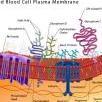Reputation Activity
-
 gene20354 got a reaction from AMcCord in Covid Convalescent Plasma Product Code Description
gene20354 got a reaction from AMcCord in Covid Convalescent Plasma Product Code Description
I looked it up in the ICCBBA website. E9804 = CONVALESCENT PLASMA|CPDA-1/XX/<=-18C|COVID-19
-
 gene20354 reacted to Cliff in Rh Pos or Rh Neg?
gene20354 reacted to Cliff in Rh Pos or Rh Neg?
After a lot of reading and deliberation, here is what we ended with.
Testing of Male Patients and Female Patients ≥ 56
Interpret according to Rh Tube Test SOP. Follow discrepancies as outlined for women below, except for sending for molecular testing.
Testing of Female Patients < 56
For newly tested women less than 56, if result is 0, testing is complete. If > 0 but < 2+, interpret as Rh neg and perform Rh molecular testing. Notify a supervisor to have molecular testing performed. If ≥ 2+, interpret as Rh pos. This is for all women less than 56, not just OB patients.
Discrepancy Resolution
What is a discrepancy? Let’s keep it simple. Regardless of what methodology was used for their previous type, if it was interpreted differently than the SOP says to interpret it now, it’s discrepant. If we get conflicting info from an outside facility, or the patient themselves, it’s discrepant. Discrepant is defined as: Rh pos when previously resulted as Rh neg, or Rh neg when previously resulted as Rh pos (at BWH, at any other institution, or per patient history.).
For Male Patients and Female Patients ≥ 56, follow the Rh Discrepancies chart in Rh Tube Test SOP. For women < 56 with a discrepant result, interpret as Rh Neg. Notify a supervisor to have molecular testing performed. -
 gene20354 reacted to Cliff in Rh Pos or Rh Neg?
gene20354 reacted to Cliff in Rh Pos or Rh Neg?
OK, not Rh, but D.
We were using solid phase technology and recently switched to gel (IH-1000).
We've had a policy for many years, if you test less than 2+, we call you Rh Neg.
Now with gel, people who were 1+ are testing 2 or 3+.
This is concerning for OB patients. Do we give Rh immune globulin or not? We've sent a few of these out for genetic testing to determine if they are capable of forming an anti-D, but if they've just delivered an Rh pos baby, and we don't get the results back for weeks, it's too late.
We are a big organization and have a very active labor unit. We used to do about 10 thousand babies a year, but lost a big contract and now do less than 8, so there are significant financial impacts to our decisions, and since our volume is so high, we also risk finding that patient that tests as 3+, but can make an anti-D.
What are you doing?
-
 gene20354 reacted to TriciaHu in Epic and blood bank
gene20354 reacted to TriciaHu in Epic and blood bank
Our blood bank (~900 beds) went live with HCLL and Epic in August 2019. There have been a lot of bumps along the way. We previously had Cerner and wish we could go back. We were told that HCLL was the best BB system to use with Epic, but we think Cerner was probably better. Every day we have to correct something that is just an HCLL-ism. The system has caused extra work for our techs and management alike. With all that said, I think it would work really well for a much smaller blood bank that doesn't do traumas as much.
-
 gene20354 got a reaction from TRabs10 in GEL DAT CONTROL
gene20354 got a reaction from TRabs10 in GEL DAT CONTROL
We run the monoclonal control card in parallel with the poly card to catch the false positives.
-
 gene20354 got a reaction from Ensis01 in FFP and RBC's Administered through same line simultaneously
gene20354 got a reaction from Ensis01 in FFP and RBC's Administered through same line simultaneously
I work at a level 1 trauma center. During trauma/MTP the Belmont Rapid Infuser is frequently used. Up to 3 units at a time (any combination of RBC/FFP) are hooked up to large diameter tubing that drains into a large reservoir. The products mix together in the reservoir rand then are rapidly infused in about 1 minute.
I also agree with David's comments about making WB.
-
 gene20354 reacted to Maura in FFP and RBC's Administered through same line simultaneously
gene20354 reacted to Maura in FFP and RBC's Administered through same line simultaneously
I am a certified emergency nurse and combat veteran and in my experience, it has been standard protocol to administer PRBCs and FFP in the same tubing during massive transfusions. We hang PRBCs on one side and FFP on the other and alternate in a 1:1 ratio using the same tubing. I have done this with both the Belmont Rapid Infuser and Level 1 Infuser. Platelets, however, are administered in separate, regular y-type blood tubing and free-flowed (hung "wide open), and not given via rapid infuser/warmer because it is contraindicated per manufacturer's guidelines. I stumbled across this thread because I have also been looking for specific clinical practice guidelines describing this practice and I can't find any. Yes, tubing is changed between units during routine blood transfusions to ensure there isn't cross contamination and so you may test products and tubing individually if there is a transfusion reaction, but when someone is hemorrhaging and we have implemented the massive transfusion protocol (MTP), we only hope that they live to have a reaction. The only adverse reaction I have ever seen to blood products is TRALI, which is a delayed reaction, so we don't know which unit would have caused it anyway. In reality it was probably a combination of all of the units and the inflammatory response the patient's body was going through s/p bilateral above the knee amputations, shock, acute kidney injury, and massive transfusion, resuscitation, and damage control surgery. If anyone has found any references regarding giving PRBCs and FFP in the same tubing, please share! My email is mauraleo@gmail.com
Thanks,
Maura Leo BSN, RN, CEN
-
 gene20354 got a reaction from Maura in FFP and RBC's Administered through same line simultaneously
gene20354 got a reaction from Maura in FFP and RBC's Administered through same line simultaneously
I work at a level 1 trauma center. During trauma/MTP the Belmont Rapid Infuser is frequently used. Up to 3 units at a time (any combination of RBC/FFP) are hooked up to large diameter tubing that drains into a large reservoir. The products mix together in the reservoir rand then are rapidly infused in about 1 minute.
I also agree with David's comments about making WB.
-
 gene20354 reacted to jalomahe in CAP TRM.30450
gene20354 reacted to jalomahe in CAP TRM.30450
When I asked CAP about this they stated that for Blood Bank it only applied to kits that come with their own Pos and Neg QC. So Fetalscreen Kit Yes, Elution Kit No.
-
 gene20354 got a reaction from AMcCord in FFP and RBC's Administered through same line simultaneously
gene20354 got a reaction from AMcCord in FFP and RBC's Administered through same line simultaneously
Yes. We do not allow platelets and cryo to be transfused using the Belmont Rapid Infuser.
-
 gene20354 got a reaction from Carrie Easley in FFP and RBC's Administered through same line simultaneously
gene20354 got a reaction from Carrie Easley in FFP and RBC's Administered through same line simultaneously
I work at a level 1 trauma center. During trauma/MTP the Belmont Rapid Infuser is frequently used. Up to 3 units at a time (any combination of RBC/FFP) are hooked up to large diameter tubing that drains into a large reservoir. The products mix together in the reservoir rand then are rapidly infused in about 1 minute.
I also agree with David's comments about making WB.
-
 gene20354 got a reaction from Carrie Easley in FFP and RBC's Administered through same line simultaneously
gene20354 got a reaction from Carrie Easley in FFP and RBC's Administered through same line simultaneously
Yes. We do not allow platelets and cryo to be transfused using the Belmont Rapid Infuser.
-
 gene20354 got a reaction from SMILLER in FFP and RBC's Administered through same line simultaneously
gene20354 got a reaction from SMILLER in FFP and RBC's Administered through same line simultaneously
Yes. We do not allow platelets and cryo to be transfused using the Belmont Rapid Infuser.
-
 gene20354 got a reaction from jalomahe in FFP and RBC's Administered through same line simultaneously
gene20354 got a reaction from jalomahe in FFP and RBC's Administered through same line simultaneously
I work at a level 1 trauma center. During trauma/MTP the Belmont Rapid Infuser is frequently used. Up to 3 units at a time (any combination of RBC/FFP) are hooked up to large diameter tubing that drains into a large reservoir. The products mix together in the reservoir rand then are rapidly infused in about 1 minute.
I also agree with David's comments about making WB.
-
 gene20354 got a reaction from exlimey in can wash change the strength of the reaction
gene20354 got a reaction from exlimey in can wash change the strength of the reaction
I agree with Malcolm's statement about trying to preserve ABO antibodies on the cells. This made me think for a second. At my facility when we prepare eluates we use cold saline for the first wash and then cold working wash solution for the remaining washes. I looked at the Immucor Elu-Kit package insert. It has the following statement in the limitations section.
The degree of dissociation of antibody that occurs during the washing procedures. This may be minimized by washing in 1° to 10°C Working Wash Solution. In most cases, satisfactory eluates can be made after washing the cells with Wash Solution at room temperature.
-
 gene20354 got a reaction from Malcolm Needs in can wash change the strength of the reaction
gene20354 got a reaction from Malcolm Needs in can wash change the strength of the reaction
I agree with Malcolm's statement about trying to preserve ABO antibodies on the cells. This made me think for a second. At my facility when we prepare eluates we use cold saline for the first wash and then cold working wash solution for the remaining washes. I looked at the Immucor Elu-Kit package insert. It has the following statement in the limitations section.
The degree of dissociation of antibody that occurs during the washing procedures. This may be minimized by washing in 1° to 10°C Working Wash Solution. In most cases, satisfactory eluates can be made after washing the cells with Wash Solution at room temperature.
-
 gene20354 got a reaction from exlimey in can wash change the strength of the reaction
gene20354 got a reaction from exlimey in can wash change the strength of the reaction
We perform tube testing for cord blood DATs. Wash cord cells once by hand washing and then make a 3-5% suspension. Place one drop of the suspension in a tube and wash 4 times in a cell washer. We don't use the microscope to read the tubes.
-
 gene20354 got a reaction from mpmiola in 4 hours to transfuse
gene20354 got a reaction from mpmiola in 4 hours to transfuse
Hi Cliff. We do 4 hours from the time the unit leaves the blood bank. We use a electronic time stamp to document this time on the blood administration tag that is attached to the unit. We teach the nurses that they have 4 hours from this time to complete the transfusion. This does not apply if we send products in a cooler.
-
 gene20354 got a reaction from David Saikin in 4 hours to transfuse
gene20354 got a reaction from David Saikin in 4 hours to transfuse
Hi Cliff. We do 4 hours from the time the unit leaves the blood bank. We use a electronic time stamp to document this time on the blood administration tag that is attached to the unit. We teach the nurses that they have 4 hours from this time to complete the transfusion. This does not apply if we send products in a cooler.
-
 gene20354 got a reaction from MaryPDX in 4 hours to transfuse
gene20354 got a reaction from MaryPDX in 4 hours to transfuse
Hi Cliff. We do 4 hours from the time the unit leaves the blood bank. We use a electronic time stamp to document this time on the blood administration tag that is attached to the unit. We teach the nurses that they have 4 hours from this time to complete the transfusion. This does not apply if we send products in a cooler.
-
 gene20354 got a reaction from Cliff in 4 hours to transfuse
gene20354 got a reaction from Cliff in 4 hours to transfuse
Hi Cliff. We do 4 hours from the time the unit leaves the blood bank. We use a electronic time stamp to document this time on the blood administration tag that is attached to the unit. We teach the nurses that they have 4 hours from this time to complete the transfusion. This does not apply if we send products in a cooler.







